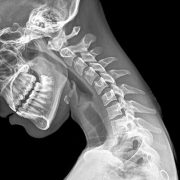Psycho
What is it about an individual that does not respect society’s rules? Researchers from Radboud University asked themselves that very question.
To seek reward and to lack self-inhibition, that pretty much sums up the recipe to commit an offense.
We recognize that these are characteristics of criminals. As well, to be antisocial and impulsive does not help. The prefrontal cortex is responsible for self-management. For example, when it comes to impulsivity, it is the orbital prefrontal cortex’s job to manage it, more specifically.
The cerebellum activates the prefrontal cortex. The cerebellum feeds on input from the receptors found in muscles, the muscle spindles.
It is muscle balance that activates the cerebellum. How interesting is it that muscle balance can be involved in… balance…
Researchers here studied 14 psychopaths and 20 non-criminals. For the same tasks, the reward center was more activated in psychopaths.
As well, it was recognized that when there was a good connection between the reward center and the middle part of the prosencephalon (the anterior part of the brain – hemispheres, thalamus and hypothalamus), control of self was easier.
When one considers that, in the context of Posturology, the goal is to create connections between the two hemispheres, especially the anterior part when it is a matter of performing eye exercises, it could be a tool that is for more than structural balance!




